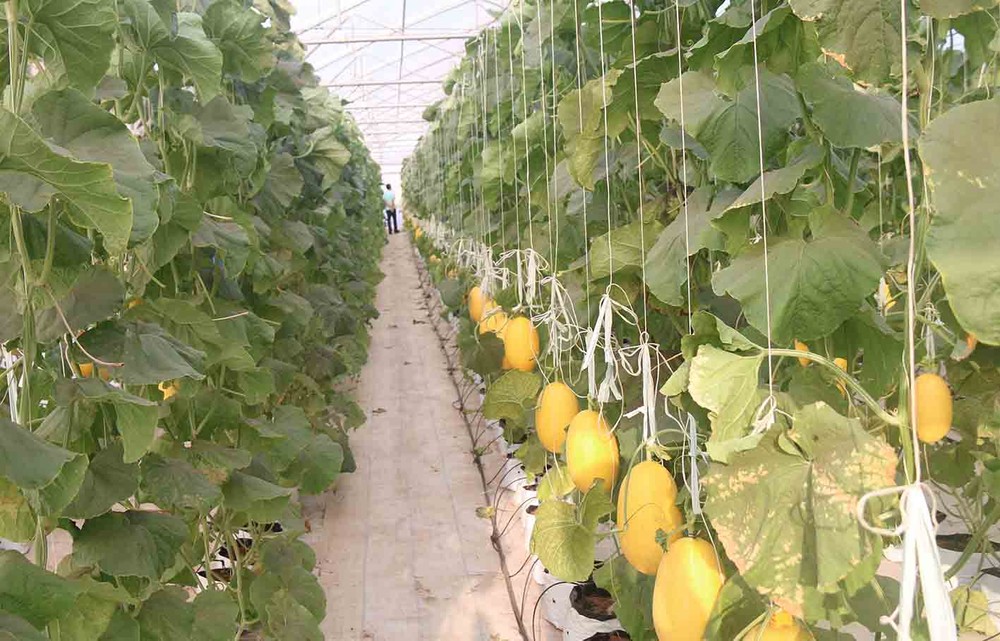
With its harsh terrain and climate, Binh Thuan Province is considered to be the locality with the fastest desertification rate in the country.
Desertification and land degradation are attacking more and more fiercely in many places in the province, affecting the lives and agricultural cultivation of local inhabitants. To minimize this situation, the locality has been and is implementing many effective methods, gradually greening the barren land.
With a coastline of 192 km, Binh Thuan Province has about 16 percent coastal sand dunes of the total natural area of the province. With a very harsh climate, and low average annual rainfall, about 20 hectares of agricultural land in the province is encroached upon by moving sand dunes each year.
In Le Hong Phong area in Bac Binh District where white sand dunes stretch as far as the eye can see, in the windy months, local inhabitants constantly have to endure the sand flying overcast, burying crops. Sand also overflows into residential areas and traffic routes, causing difficulties for people in their daily lives. In the past, thousands of people in Tuy Phong District - the largest area of wasteland in Binh Thuan Province - had to face sand jumping and blowing; therefore, their lives were threatened.
Many years ago, this land was vast white sand, local inhabitants could not grow any trees. Forests are gone, the land is degraded, poor in nutrients, so local residents' lives are very difficult, said resident Le Thanh Tinh of Binh Thanh Commune in Tuy Phong District.
Based on this reality, the agricultural sector of Binh Thuan Province has determined that research to select the type of crops, planting methods and techniques to develop a vegetation cover to prevent desertification and protect crops is an urgent requirement.
According to Deputy Director Le Thanh Son of the Department of Agriculture and Rural Development of Binh Thuan Province, in recent years, local professional agencies have implemented a model of using polymer to plant casuarina trees to stabilize moving sand dunes. Polymer is made from modified cassava starch for additional fertilizer under the planting hole. This material has the ability to expand 400 times, so it holds water quite tightly, and the plants can still easily absorb water to grow and develop in dry weather.
Thanks to the application of the above technique, the survival rate of plants has increased to over 90 percent, compared to 60 percent in the traditional afforestation model. So far, most of the desert and wasteland areas in the district have been basically greened, and the area of forest planted to combat desertification along the coast has reached over 1,500 hectares. The moving sand burying houses, agricultural land and roads have been improved.
In addition to afforestation, the application of high-tech agriculture is also being strongly promoted by Binh Thuan Province; thereby, minimizing desertification and developing the local economy. In particular, Bac Binh District which was once considered a ‘dead land’ because it had over 15,000 hectares of barren sandy land, is now gradually forming a large high-tech agricultural area.
White sand areas have now been covered with a series of greenhouses growing cantaloupes and hydroponic vegetables in the road 716 along the coast from Hoa Thang Commune to Luong Son Town in Bac Binh District.
According to the Department of Agriculture and Rural Development of Bac Binh District, thanks to high-tech water-saving production and greenhouses, many people and businesses have poured money into production, turning the once barren land into a fertile one. Ham Thuan Nam District has developed high-tech agricultural models for growing cantaloupes, grapes, and apples on the coastal wasteland strips.
In order to continue to promote the effectiveness of desertification response work, Deputy Director Le Thanh Son of the Department of Agriculture and Rural Development of Binh Thuan Province said that the province has proposed to the Ministry of Agriculture and Rural Development to create conditions for Binh Thuan Province’s continued investment in the application of scientific and technological and support the promotion of scientific studies in afforestation on coastal sandy land.
In particular, priority is given to scientific and technical research in the orientation of high technology, helping to expand the models of afforestation and high-tech agriculture that have achieved good outcomes to help people have conditions to develop.
























